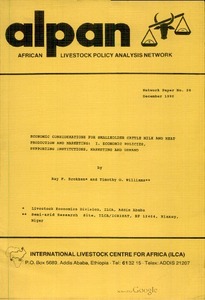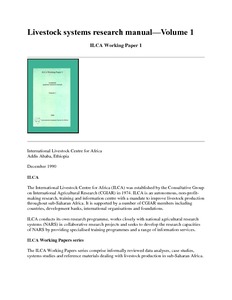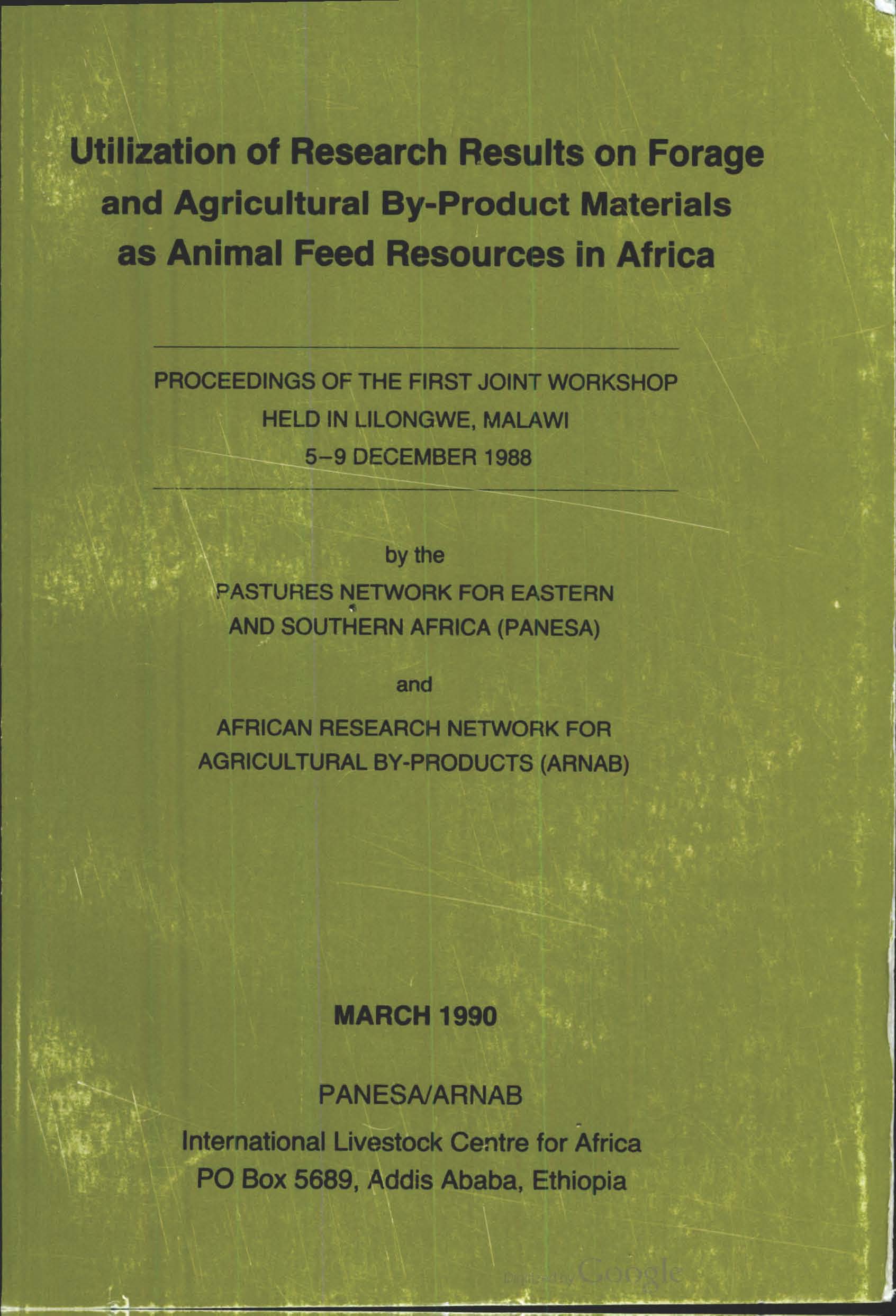Budgeting and allocation of feed resources
Presents procedures for feed budgeting and allocation developed to access the quantity and quality of all feed components and to determine the production goals of each enterprise and allocates feed in relation to their requirements within the framework of overall feed supplies.
Economic considerations for smallholder cattle milk and meat production and marketing. I. Economic policies, supporting institutions, marketing and demand
Discusses the considerations relating to economic policy, supporting institutions and marketing and consumer demand. Classifies and discusses market functions and analyses market organization and institutions of marketing. Looks into the purpose of marketing studies. Discusses some lessons from past livestock marketing studies.
Livestock systems research manual. Volume 1
Provides a brief outline of the theory and practice of livestock systems research, and presents the fruits of both ILCA's own long experience of livestock systems research and of expertise and efforts of others in the field. The manual may be of use to a wide audience, including those who need to study livestock systems in Africa in the context of development activities rather than research.
Utilization of research results on forage and agricultural by-product materials as animal feed resources in Africa. Proceedings of the first joint workshop
Presents and discusses research results on feed resources, agroindustrial by-products utilisation, forage production, use of crop residues, dairy feeding systems, feeding strategies, introduction and adoption of improved forage technologies, nutritive value of different forages, effects of management on animal performance, effect of supplements on feed utilisation, potential of agricultural by-products as animal feeds, and effects of management on pasture grasses & legumes; and evaluates the utilisation of these results by smallholders.
Los bosques y la alimentaria
Unasylva examina el significado de los bosques para la seguridad alimentaria, formulando la siguiente pregunta: Cmo hacer que los programas y actividades de desarrollo forestal sirvan para asegurar econmica y materialmente a todo el mundo, en todo momento, el acceso a su alimento? En el artculo de fondo M. Hoskins expone cmo contribuyen - y cmo podrn contribuir - los bosques a la seguridad alimentaria, y sugiere estrategias para incorporar a las actividades de desarrollo forestal elementos de seguridad alimentaria.
Foresterie et sécurité alimentaire
Le prsent numro d'Unasylva examine en dtail le rapport entre la foresterie et la scurit alimentaire et se pose la question suivante: Que peut-on faire pour que les programmes et activits de dveloppement forestier contribuent dans la mesure du possible assurer l'accs conomique et physique aux produits alimentaires pour tous et en tout temps? Dans l'article de fond, M.
Forestry and food security
The current issue of Unasylva takes a long look at the relationship of forestry with food security, and asks the question, ''How can forestry development programmes and activities become as relevant as possible in ensuring economic and physical access to food by all people at all times?" In the lead article, M. Hoskins sets out the actual and potential contributions of forestry to food security, and suggests practical strategies for the incorporation of food security components in forestry development activities.
The concept of rangeland carrying capacity in sub-saharan Africa: Myth or reality?
Ever since colonial administrators and western trained scientists became involved in sub-Saharan Africa in the early 20th century and were faced with the task of governing countries where livestock production was a major economic enterprise, the proper utilisation of rangelands became a major concern. While during most of the colonial era devastating epidemics (like rinderpest and pleuropneumonia) kept the growth of livestock populations in check, during the 1950s and 1960s regional campaigns of eradicating these major cattle diseases created a continuous increase in livestock numbers.
Land degradation, stocking rates and conservation policies in the communal rangelands of Botswana and Zimbabwe
This article suggests that communual rangeland management policies in Botswana and Zimbabwe are based on incorrect technical assumptions about the stability of semiarid rangelands, the nature of rangeland degradation, and the benefits of destocking. Consequently, inappropriate policies, stressing the need to destock and stabilise the rangelands, are pursued.Acknowledgement of the great instability but intrinsic resilience of rangeland would encourage the Governments to more favourable regard the opportunistic stocking strategies of the agro-pastoralists of the Communual Areas.







